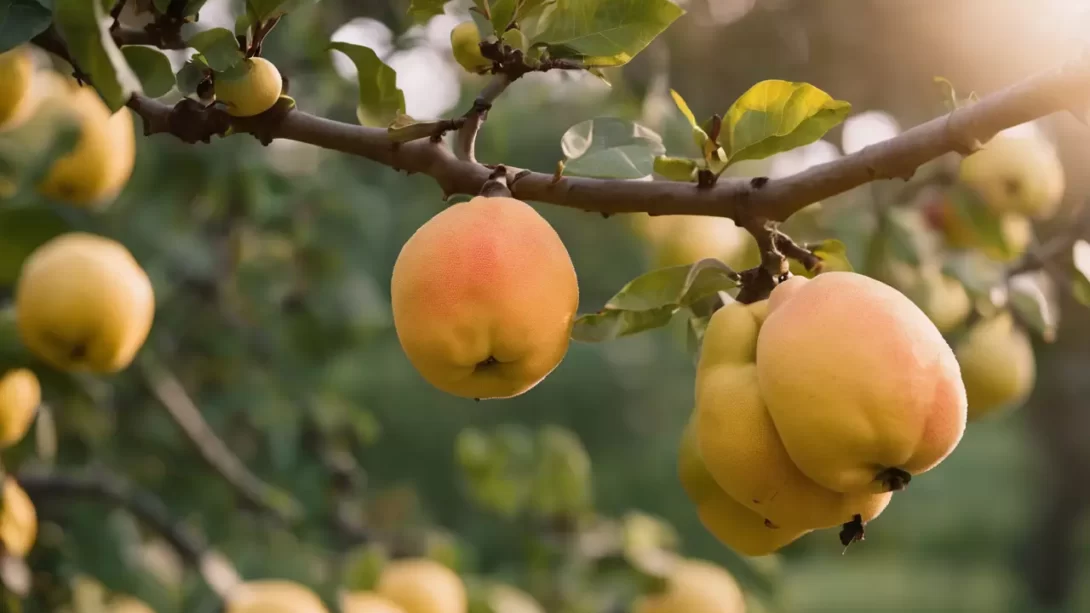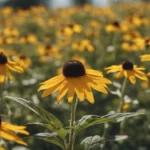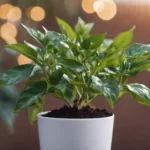Quinces are a unique and often overlooked fruit that bring a distinctive flavor and aroma to a variety of dishes. Unlike more common fruits, quinces are not typically eaten raw; they are transformed through cooking into delectable treats. Knowing when quinces are ripe is crucial for harnessing their full potential in culinary applications. This article will guide you through identifying ripe quinces, ensuring you harvest them at the peak of their flavor and texture.
Identifying Quinces
Quinces are part of the same family as apples and pears, but they have a distinctive appearance and taste. They are usually large, with a bright yellow skin when fully ripe, and covered in a fuzzy coating when young. Quinces come in a few varieties, each with subtle differences in flavor and texture. The fruit typically ripens in late autumn, although the exact timing can vary based on the climate and growing conditions.
Signs of Ripeness in Quinces
Determining when a quince is ripe involves observing several key characteristics. Firstly, the color of the fruit is a clear indicator; ripe quinces turn a deep, golden yellow. The once fuzzy coating of the fruit also diminishes significantly when it’s ready to be harvested. Another sign is the texture; a ripe quince will yield slightly to pressure, although it will still be firmer than ripe apples or pears.
The aroma of the quince is another crucial indicator. A ripe quince emits a strong, sweet, and pleasant fragrance. This is often noticeable even without getting too close to the fruit. If the quinces are still green and hard with no discernible scent, they need more time on the tree.
The Right Time to Harvest Quinces
The ideal time to harvest quinces typically falls in late autumn, but this can vary depending on your geographic location and local climate conditions. In cooler climates, quinces may ripen earlier, while in warmer regions, they might take longer. It’s important to monitor the fruit regularly as the season progresses, particularly paying attention to changes in color and aroma.
Weather conditions play a crucial role in the ripening process of quinces. Extended periods of warm, sunny weather tend to accelerate ripening, while cooler, cloudy days may slow it down. Quinces are hardy and can withstand early frosts, but it’s generally best to harvest them before the onset of harsh winter weather.
Harvesting and Handling Quinces
Harvesting quinces requires a gentle touch to avoid bruising the fruit. When you’ve identified ripe quinces, use a pair of clean, sharp pruning shears or a similar tool. Cut the stem of the quince close to the fruit, being careful not to pull or twist the fruit off the tree, as this can cause damage to both the tree and the fruit.
Once harvested, handle the quinces with care. They can bruise easily, which may lead to spoilage. Store the quinces in a cool, dry place if you are not using them immediately. They can be kept for several weeks under proper conditions. However, be aware that quinces continue to ripen off the tree, so their texture and flavor may change during storage.
Using Ripe Quinces
Ripe quinces are a delight in the kitchen, known for their ability to transform into deliciously fragrant and flavorful dishes. They are commonly used to make quince jelly, jam, and membrillo (a Spanish quince paste). Quinces can also be poached, baked, or roasted, which softens their flesh and brings out their sweet, aromatic qualities.
When preparing quinces for cooking, remember that they have a hard, dense flesh and a tough core. They require peeling and coring, which can be a bit more labor-intensive than preparing other fruits. Cooking quinces typically involves a slow, gentle process, allowing their full flavor and aroma to develop.
Unripe Quinces: Uses and Considerations
While ripe quinces are preferred for most culinary uses, unripe quinces aren’t without their uses. Less ripe quinces have a firmer texture and a more tart flavor, which can be desirable in certain recipes. They can be used to make robustly flavored jams and jellies, where the added sugar balances their tartness. Unripe quinces are also suitable for recipes that require long cooking times, which can soften their hard flesh and mellow their astringency.
When working with unripe quinces, it’s important to adjust your expectations in terms of flavor and texture. They won’t have the same level of sweetness and perfume-like aroma as the ripe fruits, but they still offer a unique taste and are worth experimenting with in the kitchen.
Conclusion
Knowing when to harvest quinces is key to unlocking their full culinary potential. The best quinces are those that are harvested at the peak of ripeness, characterized by their deep yellow color, soft texture, and fragrant aroma. However, even unripe quinces have their place in the kitchen, offering a different, yet equally intriguing, flavor profile.
Quinces may require a bit more effort in terms of preparation and cooking, but the results are rewarding. Their transformation from a hard, somewhat uninviting fruit into a soft, fragrant, and flavorful delicacy is one of the great joys of autumn cooking. Whether you’re making a simple jelly, a sophisticated membrillo, or experimenting with poached quinces, this unique fruit brings a touch of elegance and a taste of tradition to your culinary creations. Harvesting them at the right time is your first step in exploring the rich possibilities they offer.




